米無人宇宙機「オデュッセウス」、民間初の月面軟着陸に成功
【2024年2月27日 NASA】
NASAは、将来の月面における人類活動の基盤作りのため、観測機器や探査車などの月への輸送を民間企業に有償で付託する「商業月面輸送サービス(CLPS;Commercial Lunar Payload Services)」の計画を進めている。そのCLPSを想定した最初のミッションとして、2018年11月に米民間宇宙企業インテュイティブ・マシーンズ(Intuitive Machines)社の月着陸ミッション「IM-1」の月着陸機「Nova-C(ノバC)」(愛称:Odysseus、以下オデュッセウス)が選定された。
日本時間(以下同)2月15日、オデュッセウスを搭載したスペースX社の「ファルコン9」ロケットが米フロリダ州ケープカナベラル宇宙軍基地から打ち上げられた。ロケットから分離された着陸機は予定の軌道へ投入され、発電や通信が確認されて打ち上げは成功した。

オデュッセウスの打ち上げ(提供:SpaceX)
オデュッセウスは順調に飛行を続け、21日に月を周回する高度92kmの円軌道に投入された。そして23日8時23分、月の南極域にある「マラパートA」(Malapert A)クレーター付近に軟着陸した。民間企業の月面着陸の成功は世界初で、米国としても1972年のアポロ17号以来約50年ぶりの月面着陸となった。
「半世紀以上ぶりにアメリカが月に戻ってきました。NASAの科学機器を搭載した月着陸機オデュッセウスを月の南極域へ着陸させたインテュイティブ・マシーンズ社へお祝いを申し上げます。この成功は、アルテミス計画のもと、宇宙飛行士を月へ、そしてその先の火星へと送る新たな航海への扉を開くものです」(NASA長官 ビル・ネルソンさん)。
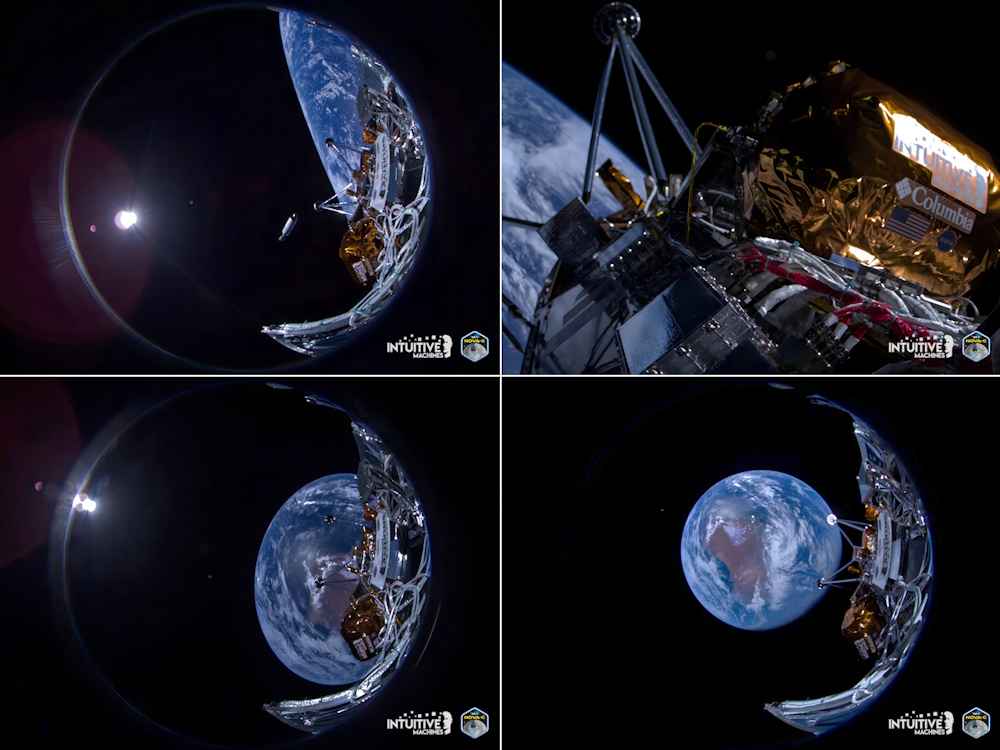
飛行中にオデュッセウスが撮影した初画像。画像クリックで表示拡大(提供:Intuitive Machines、以下同)
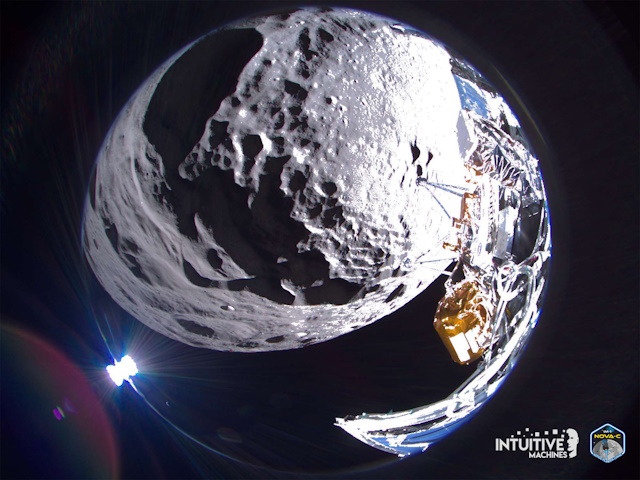
オデュッセウスが月面降下中に高度約10kmで撮影したSchombergerクレーター
着陸後のテレメトリデータの分析から、オデュッセウスは横倒しの状態にあるらしいことが示されている。ただし、新たに入手するデータ次第では判断が変わる可能性があり、今後も分析が続けられる。
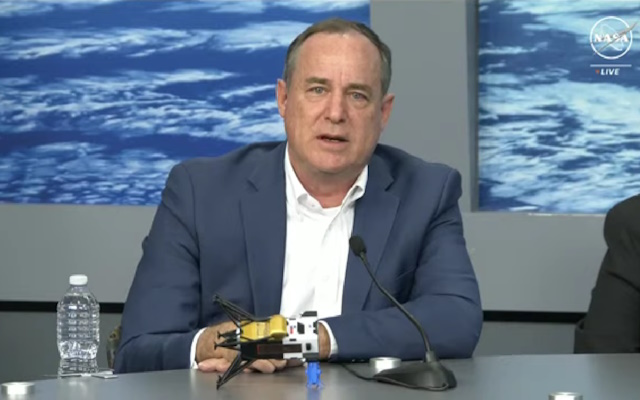
着陸後の記者会見で機体の状態を模型で説明する、インテュイティブ・マシーンズ社CEOのSteve Altemusさん(提供:NASA)
また、着陸直前にオデュッセウスから小型カメラ「EagleCam」が分離されて着陸の様子が撮影される予定だったが、着陸の段階で発生した問題の対応に追われたためカメラの切り離しは行われなかった。しかし、機体の状態についての最終的な判断に写真が必要となるため、地上から指令を出してEagleCamの放出と機体の撮影が試みられるという。
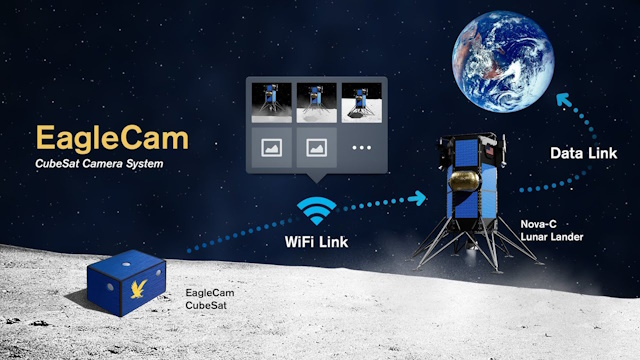
オデュッセウスから着陸直前に分離されて着陸の様子を撮影する予定だった外部カメラ「EagleCam」(左に描かれている青いキューブサット)のイメージイラスト(提供:Embry-Riddle Aeronautical University)
幸い、オデュッセウスに搭載されている観測機器のほとんどは稼働に問題がなく、データの収集を続けている。着陸地点は2月29日まで昼間であるため、ソーラーパネルでの発電が可能だ。その間にオデュッセウスは電波分光計「ROLSES(Radio-wave Observations at the Lunar Surface of the Photoelectron Sheath)」で月面を観測する予定で、その結果は自然現象や人為的な活動が将来月面で行われる科学観測にどういった影響を及ぼすのかを判断するのに役立てられる。
〈参照〉
- NASA:
- Intuitive Machines:
- X:
- NASA:
- For the first time since the Apollo era, new NASA science instruments and tech demonstrations are operating on the Moon(2月24日午前9時26分)
- @Int_Machines' uncrewed lunar lander landed(2月23日午前8時39分)
- This is the first time an American commercial lunar lander has made it to orbit around the Moon(2月23日午前7時00分)
- Intuitive Machines:
- Intuitive Machines’ Odysseus lunar lander captures a wide field of view image of Schomberger crater on the Moon(2月24日午前8時23分)
- Odysseus is alive and well. Flight controllers are communicating and commanding the vehicle to download science data. The lander has good telemetry and solar charging(2月23日午後11時18分)
- After troubleshooting communications, flight controllers have confirmed Odysseus is upright and starting to send data(2月23日午前10時25分)
- An additional orbit before starting the IM-1 Mission landing sequence(2月23日午前4時30分)
- A lunar correction maneuver to raise Odysseus’orbit(2月23日午前1時30分)
- Odysseus’ Terrain Relative Navigation camera captured this image of the Bel’kovich K crater in the Moon’s northern equatorial highlands(2月22日午前8時50分)
- The lander continues to be in excellent health, orbiting approximately 92 km above the lunar surface(2月22日午前8時14分)
- Odysseus completed its scheduled 408-second main engine lunar orbit insertion burn and is currently in a 92 km circular lunar orbit(2月22日午前0時21分)
- Goodnight, Moon(2月21日午後3時00分)
- IM-1 mission’s second planned Trajectory Correction Maneuver(2月21日午前7時00分)
- The final maneuver before Odysseus’ largest challenge to date(2月21日午前7時00分)
- Images taken while the lander maneuvered to CM burn attitude(2月20日午前8時45分)
- Successfully transmitted its first IM-1 mission images to Earth(2月18日午前2時00分)
- Nova-C class lunar lander has launched on SpaceX’s Falcon 9 rocket and successfully commissioned in space by establishing a stable attitude, solar charging, and radio communications contact(2月15日午後11時20分)
- Bill Nelson(NASA administrator): Today, for the first time in half a century, America has returned to the Moon
- Joe Biden(President of the United States):For the first time in over 50 years, an American spacecraft landed on the Moon(2月25日午前0時03分)
- NASA:
〈関連リンク〉
関連記事
- 2025/03/10 月着陸船「アテナ」と探査車「ヤオキ」、月面活動を早期終了
- 2025/03/07 月着陸船「アテナ」、月面にタッチダウン
- 2025/02/28 月着陸船「アテナ」打ち上げ、日本の探査車「ヤオキ」を搭載











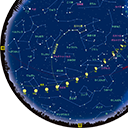
![[アストロアーツ かけはしプロジェクト:つなげよう日本 子供達の未来を守るために]](https://www.astroarts.co.jp/official/kakehashi/image/kakehashi_s.jpg)